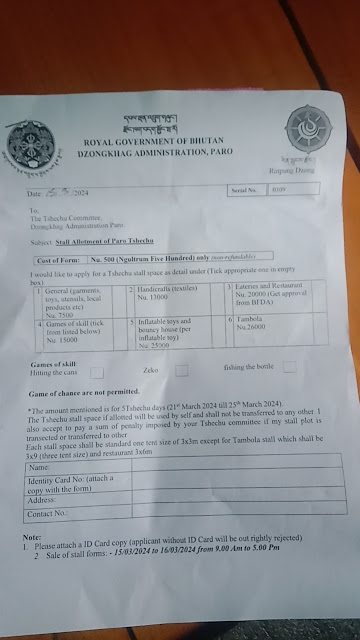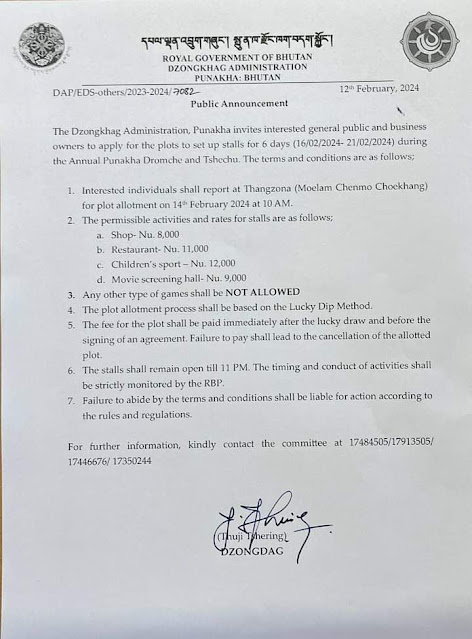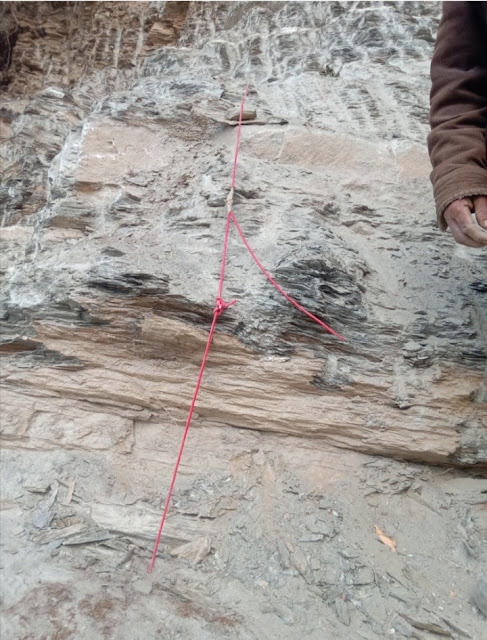༡༽ བུ་རིག་པའི་ཁོངས་ལས་མ་ཤརན།། ཡུམ་ཨ་མའི་བསྐོར་གཏམ་དོན་མེད་ཨིན།།
༢༽ ཕ་སླབ་པའི་ཁ་ལུ་མ་ཉན།། བུ་རུས་སྦལ་ཁ་ལས་ཤིང་ཤོར།།
༣༽ ཕ་ཤིན་བུ་སྒོ་ཡངས།།
༤༽ ལྟོ་རྩིས་ཕ་དང་བུ།། དྲིན་ལན་ཞར་དང་ཞོར།།
༥༽ ཕ་རྒས་པ་མནོ་སྟེ་བུ་གསོ།།
༦༽ ཨ་ལོ་མ་རྔུན་ཨའི་གིས་ཨོམ་མི་བྱིན།།
༧༽ ཨ་ལུ་རྔུ་སར་ཨའི་གི་ཕངས་མར།།
༨༽ ལམ་བགོམ་གསུམ་འགྲོ་ལམ་མ་གཤགན།། ལ་ལུང་པ་གཉིས་ཀྱི་ རིང་ཐུང་ཧ་མི་གོ། གཏམ་ཚིག་གསུམ་བརྡ་ལན་མ་འཇལན།། ཕ་དང་བུ་ཡང་ངོ་མི་ཤེས།།
༩༽ ཁུར་ཆ་ཨ་པ་འབག་ཚེ་འཇམ་འཇམ་འདྲ།། ཟས་ཨ་མ་ཟ་ཚེ་ཞིམ་ཞིམ་འདྲ།།
༡༠༽ ཕ་བཟང་གི་བུ་དང་།། གྱི་བཟང་གི་ཤུབས།།
༡༡༽ བུ་མཁས་རུང་ཕ་མའི་བསླབ་བྱ་དགོ། ཚོང་མཁས་རུང་སྔོན་བསགས་བྱིན་འབྲས་དགོ།
༡༢༽ ཟླ་བ་དུང་ལས་དཀར་རུང་།། སེལ་བའི་མེ་ཆབ་དགོ །སྨན་ཆུང་ལྷ་ལས་ལེགས་རུང་།། མནོ་བའི་དོན་ཧིང་དགོ།
༡༣༽ སྟུ་གིས་སླབན་ག་སླབ།། མཇེ་གིས་འཁྱིདན་ག་འཁྱིད།།
༡༤༽ རྡོ་ཨིན་ཀྲག་ཀྲ་དང་།། ལྕགས་ཨིན་སིང་སིང་།།
༡༥༽ བྱིན་གེ་ཟེར་བ་དགའ་མི་དགོ། ཕྱད་གེ་ཟེར་བ་འདྲོག་མི་དགོ།
༡༦༽ སྐེ་ལུ་བཏགས་པའི་ལྦའུ།། ཕར་ཕུད་རྐྱབ་ས་མིན་འདུག།
༡༧༽ ཁབ་རྩེ་གཉིས་ཀྱིས་བཙེམ་མི་བཏུབ།། བློ་རྩེ་གཉིས་ཀྱིས་དོན་མི་གྲུབ།།
༡༨༽ མི་ངན་གྱིས་གཡུས་དཀྲུགས།། བྱ་ངན་གྱིས་གདངས་དཀྲུགས།།
༡༩༽ རང་སྐལ་ཨིན་རྡོ་ཡང་རྨུར།། གཞན་སྐལ་ཨིན་མར་ཡང་མི་ བཞུ།།
༢༠༽ གོང་མའི་བཀའ་འབགན་རི་བ་ལྕི།། འབོརན་གསེར་བ་ཕངས།།
༢༡༽ ཁལམ་ཆུང་རུང་མེ་ཏོག། དུང་ཤིང་སྦོམ་རུང་ཁོང་སྟོང་།།
༢༢༽ སྒོང་ཕུག་ནང་གི་མདའ་གཞུ།། བཀང་ས་ཡོད་རུང་རྐྱབ་ས་མེད།།
༢༣༽ གྲོས་མི་ལུ་དྲིས།། ཐག་རང་གིས་བཅད།།
༢༤༽ ཤེས་ཀྱང་མི་ལུ་དྲིས།། མགྱོགས་ཀྱང་རྟ་ལུ་བཞོན།།
༢༥༽ སེམས་མནོ་ནི་མངན་འདྲེ་དང་འཕྱད།། བགོམ་སྤོ་རྒྱ་མངན་རྡོ་དང་འཕྱད།།
༢༦༽ ཤེས་ཚད་རོགས་ལུ་མ་སྟོན།། མཁསཔ་རོགས་ཀྱིས་འབད་འོང་།།
༢༧༽ སྐྱེས་ཚད་བུ་ལུ་མི་འགྱུར།། བསགས་ཚད་ནོར་ལུ་མི་འགྱུར།། སླབ་ཚད་གཏམ་ལུ་མི་འགྱུར།།
༢༨༽ འབད་བྱིནམ་བ་སྟོནམ་བྱིནམ་དྲག།
༢༩༽ ཕ་ཤུལ་བུ།། གཡག་ཤུལ་ཀོཝ།།
༣༠༽ གཟུགས་རང་གིས་སྦོམ་རུང་།། དྲནམ་རོགས་ཀྱིས་བཙུགས།།
༣༡༽ སྤར་བ་སྤར་སའི་ས་མེད།། སྤར་པའི་སློབ་དཔོན་གཡས་ལས་མས།། རྩིས་བ་རྩིས་སའི་ས་མེད།། རྩིས་པའི་སློབ་དཔོན་གཡོན་ལས་མས།།
༣༢༽ གསིག་པ་ལྷ་གིས་གསིག། མ་པ་རང་གིས་གསིག།
༣༣༽ སྡོད་ས་བྱིན་བརྐྱང་ས་འཚོལ།།
༣༤༽ ནང་དོག་པའི་ཁ་ལས་ག་སླབ་མེད།། ཆུ་གིས་འབག་པའི་ལགཔ་ག་བཤེད་མེད།།
༣༥༽ ཆང་མར་འཛུལ།། གཏམ་ཡར་འཐོན།།
༣༦༽ བྱཱོག་པ་ལྷམ་གཅིག་ཡོདན།། བྱཱར་ཡང་བཙུགས་དགུན་ཡང་བཙུགས།།
༣༧༽ བྱཱོགཔ་ལ་གཡག་གླིང་གཞི་མར་གྱི་མཛོད།། གཏོརམ་དཀར་རྒྱན་མེད་པར་ཧམ་ཐལ་ཐལ།།
༣༨༽ གཏོར་མ་དཀར་རྒྱན་མེད་རུང་།། ཞལ་ཟས་མར་གྱིས་བཞེངསམ་ཨིན།།
༣༩༽ སེམས་རང་སེམས་བ་གསལཝ་མེད།། ཆུ་དགུན་ཆུ་བ་དྭངསམ་མེད།།
༤༠༽ སྤང་ལུ་མགྱོགསཔ་ཏོག་ཙེ།། ནགས་ལུ་མགྱོགསཔ་སྟྭ་རེ།།
༤༡༽ ཁ་དང་ལགཔ་འཕྱདཔ་དང་ཀི་ལི་ཟུར་ཁ།།
༤༢༽ རྟ་ཅིག་འོངན་རྟིའུ་ལས།། མི་ཅིག་འོངན་ཆུང་ལས།།
༤༣༽ དགྲ་ཆུང་དུས་ལས་བཏུལ།། མེ་ཆུང་དུས་ལས་བསད།།
༤༤༽ མེ་ཕར་འཕུ།། རྒྱཝ་ཚུར་འཚིག། ཆརཔ་ཕར་ཁ་རྐྱབ་།། ཟིལཔ་ཚུར་རེག།
༤༥༽ མད་མེདཔ་ལྟཝ་མཐོ།། ཟ་ནི་མེདཔ་ཕོཝ་སྦོམ།། གྱོན་ནི་མེདཔ་གྱིད་ཐག་རིང་།།
༤༦༽ ཆུང་ཚེ་ཀ་ཁ་མ་ལྷབན།། སྦོམ་ཚེ་ཡིག་ངོ་མི་ཤེས།།
༤༧༽ ཁྱི་དང་བུད་མེད་ཨོ་རོག་གསུམ།། སྦྱིན་པ་བཏང་པའི་ཡུལ་ཡིན།།
༤༨༽ དུག་གི་རྩ་བ་བོང་།། ཕུང་གི་རྩ་བ་བུད་མེད།།
༤༩༽ ཚེ་སྟོད་ལ་དགའ་བ་རྒྱུ་ནོར་ཨིན།། ཚེ་སྨད་ལ་དགའ་བ་བུ་ནོར་ཨིན།། ཚེ་ཕྱི་མ་དགའ་བ་དམ་ཆོས་ཨིན།། རྒྱུ་ནོར་ཕུང་གི་རྩོད་གཞི་ཨིན།།
༥༠༽ སེམས་ཅན་སྟག་གི་རི་མོ་ཕྱི་ལས།། མགུ་ནག་མིའི་རི་མོ་ནང་ལས།།
༥༡༽ རྟ་གསོ་བའི་དྲིན་རྡོག་པ་འཇལ།། རང་ཟ་བའི་བང་ཅུང་ནང་ཨ་བ་བཏང་།།
༥༢༽ གྱི་དང་ཕོརཔ་གློ་ལུ་བཞག། ཆང་དང་འཐབ་མ་ག་འཕྱད་མེད།།
༥༣༽ ཞནམ་མཐོ་སར་བཀལན།། ཆུ་ཡང་བྱེ་གིས་འཇལ།།
༥༤༽ ཞནམ་མཐོངན་བསྐུལ་དགོ་མནོ།། དྲགཔ་མཐོངན་བྱིན་དགོ་མནོ།།
༥༥༽ མེ་འཕུཝ་མགྱོགསན།། དུ་པ་ཆགསཔ་མགྱོགས།།
༥༦༽ འཇིག་རྟེན་མ་ཕྱི།། དམ་ཆོས་མ་ཧ།།
༥༧༽ སྒོམ་ཆེན་མ་ཤི་ཚེ་རིང་།། གནས་སྐོར་བསྐོར་བའི་དུས་ཅིག་འོང་།།
༥༨༽ ཁག་བླམ་ཆེ།། བླམ་བ་རང་ཆེ།།
༥༩༽ ཕམ་ཞན་པའི་བུ་ཚུ།། བླམ་ཞན་པའི་སློབམ།།
༦༠༽ ཁེ་རྒོ་གླངམོ་ཆེ་ལུ་ཡོད་རུང་།། ཡར་ཕོམ་ཀི་ཤི་གིས་ཡང་རྐྱབ་ཨིན།།
༦༡༽ རང་གིས་ཉོ་བའི་ཉོ་ཆང་།། མངར་རུང་སྐྱུར་རུང་འཐུང་དགོ།
༦༢༽ མེ་ཏོག་ཆུང་རུང་མཆོད་པའི་ཟས།།
༦༣༽ མདའ་རྐྱབ་ལུགས་མི་གཙོ་གཏད་ལུ་གཙོ།། བློ་སླབ་ལུགས་མི་གཙོ་ཉན་ལུགས་གཙོ།།
༦༤༽ ཨ་ནི་ཐུགས་རྗེ་ཅནམ་ཡོདན།། གེ་སར་རྒྱལཔོ་ག་གིས་ཡང་ལྕོགས།།
༦༥༽ བློ་བྱག་ཕུག་ལུ་གཏད་།། བྱག་ཕུག་སྟོངམ།།
༦༦༽ ཁེ་ཡོདན་རང་ཐག་ཡང་གློ་བ་བཏགས་འདྲུད།།
༦༧༽ ཆུ་འགྱོ་བའི་ཞོར་ཁ་རང་ཐག་འདྲུད།། རྒྱོམ་གེ་རེད་བརྡུང་པའི་ཞོར་འབུབ་བསད།།
༦༨༽ ཕ་ཡུལ་ལ་རྟ་བརྒྱ་ཐམས་པ་ཡོད།། ང་རང་འགྱོན་རྐང་ཐང་།།
༦༩༽ དམག་རྐྱབ་ས་གོངམ་དཔོན་གཡོག་མེད།། རྒྱོམ་གེ་རེད་བརྡུང་སར་ཁོལ་ཇོ་མེད།།
༧༠༽ ཁ་མེད་པའི་མི་ལུ་སླབ་ངོ་བདེ།། ཤིང་ཀེ་ཀེ་ཅནམ་བརྫམ་ངོ་བདེ།།
༧༡༽ སེམས་ལས་ངན་པའི་དུག་ཆུ་འཛག། དཀར་བའི་དགའ་འཛུམ་ཕྱི་ལས་བཏོན།། ཁ་འཇམ་གཡོ་སྒྱུ་ཆེ་བ་འདི།། གཏན་གྱི་བློ་ཕུག་འདྲི་ས་མེན།།
༧༢༽ ཆུ་མེད་པའི་ཟམ་རྐྱབ།། ཁག་མེད་པའི་འགན་འབག།
༧༣༽ མི་ལུ་བཀལ་བའི་ངོ་ཚ།། རྟ་ལུ་བཀལ་བའི་ཁུར་ཆ།།
༧༤༽ རྒྱལ་པོའི་བཀའ་ལུ་ལན་གཅིག་མ་གཏོགས་ལན་གཉིས་མེད།།
༧༥༽ རྒྱལ་པོའི་བཀའ་དང་རི་གཟར་གྱི་འབབ།།
༧༦༽ གནམ་དང་རྒྱལ་པོའི་ཚོལ་མི་མཐོང་།།
༧༧༽ སྒོགཔ་བཙུགས་ཏེ་རང་གིས་བཙུགས།། ལ་ཕུག་འབལཝ་དེ་རོགས་ཀྱིས་འབལ།།
༧༨༽ རུ་ཏ་རྒོད་ཀྱིས་བཅག། རྐང་ཨོ་རོག་གིས་འཇིབས།།
༧༩༽ བྱ་གནམ་ལས་འཕུར་རུང་།། ཐུག་ས་ས་ཁར་ཨིན།།
༨༠༽ འཆམ་ཚེ་ཧིང་གཏམ་མ་བཤད།། རྒྱགས་ཚེ་ཁ་ལན་མི་འབྱོར།།
༨༡༽ བློ་གཏད་པའི་མི་གིས་ཧིང་བརྐུ།།
༨༢༽ མི་གཅིག་གི་བློ་རྩེ་ལས།། མི་གསུམ་གྱི་གྲོས་བསྡུར་དགའ།།
༨༣༽ ཤ་ཚ་བའི་ཁ་ལས་གཏམ་ཧནམ་མི་འཐོན།།
༨༤༽ འཚམས་ཚོད་དུས་ཀྱིས་རན།། ས་ཡང་སྦུག་ལས་འགག།
༨༥༽ འཚམས་ཚོད་ཤེསན་མཁས་པའི་རྟགས།།
༨༦༽ སྦུལ་མཇུགམ་རིངན་རྟས་ཐག་རེག།
༨༧༽ ཕྲང་སྟེ་སླབན་མི་མི་དགའ།། རྟས་ཐག་བརྡུངན་ཁྱི་མི་དགའ།།
༨༨༽ མི་ངོ་ཚ་མེདཔ་ཁྱི་དང་འདྲ།། ཁྱི་མཇུག་མ་མེདཔ་ལྟས་ངན་ཨིན།།
༨༩༽ སྐྱིདན་ནམ་མཁའི་བྱ་ཡང་འཁོར།། སྡུགན་མཆན་གྱི་བུ་ཡང་སྤང་།།
༩༠༽ གསེར་རང་ལུ་ཡོདན།། རག་ག་ལས་ཡང་ཐོབ།།
༩༡༽ ཉིནམ་གཅིག་ཚུར་དང་ཉིནམ་གཅིག་ཕར།།
༩༢༽ འགྲོས་ཀྱི་འགྲོས་ཀྱི་འགྱོན་ བོང་ཀུ་གིས་ཡང་བོད་ལྷ་ས་བསྐོར་འོང་།།
༩༣༽ བསམ་པ་བཟང་ན་ས་དང་ལམ་ཡང་བཟང་།། བསམ་པ་ངན་ན་ས་དང་ལམ་ཡང་ངན།།
༩༤༽ མཁས་རྟགས་ཞི་ཞིང་འདུལ་བ།། སྒོམ་རྟགས་ཉོན་མོངས་མེདཔ།།
༩༥༽ མཁས་པའི་མི་ལུ་རྩ་གཅིག་ཡོད།།
༩༦༽ གསེར་སྲང་བརྒྱ་ལས་ཡོན་ཏན་སྣ་གཅིག་དགའ།།
༩༧༽ སྟག་མཆོང་ས་འམ་མཆོང་།། འམ་སྐེདཔ་ཆག།
༩༨༽ རང་ཡུལ་ཟམ་པའི་འོག་ཨིན་རུང་དགའ།།
༩༩༽ དོམ་རྒྱབ་ཐལཝ་ད་དཔའ་རྟགས་འབལ།། བླམ་རྒྱབ་ཐལཝ་ད་བསངས་བཏང་།།
༡༠༠༽ མགུ་རུལ་བ་སྣས་མ་ཚོར།།
༡༠༡༽ མགུ་འཁྱུ་བ་གདོང་དགཔ།།
༡༠༢༽ ཕྱུག་པའི་བུ་ཚུ་ཁ་མ་ཡངས།། ཞན་པའི་བུ་ཚུ་ལགཔ་མ་ཡངས།།
༡༠༣༽ བྱཱོགཔ་ཆང་གིས་བགྲང་རུང་།། བ་དང་བེའུ་ངོ་མི་འཛོལ།།
༡༠༤༽ བྱཱོགཔ་མི་མེན།། ཁན་པ་ཤིང་མེན།།
༡༠༥༽ ལྷངམ་མའི་མི་ལུ་རྟ་ཡང་རེ།།
༡༠༦༽ སྒོགཔ་རང་ཟན་ཁ་ཚ།། རོགས་ཟན་མིག་ཚ།།
༡༠༧༽ གནམ་དུས་དང་བསྟུན་པའི་བགོ་གྱོན།། དུས་ཚོད་དང་བསྟུན་པའི་ཟས་ཟ།།
༡༠༨༽ ཁབ་འཚོལ་ཡི་ཟེར་སྟྭ་རེ་བྱང་།།
༡༠༩༽ ཕར་རྐྱབ་པའི་སྟྭ་རེ་བ།། ཚུར་ལོག་པའི་ཞོག་ཀོ་ཤུགས་ཆེ་བས།།
༡༡༠༽ འདོདཔ་ཆེ་ན་སྲོག་དང་བྲལ།།
༡༡༡༽ རྩིས་མེདན་ཉེཝ་འཆམ།།
༡༡༢༽ དགྲ་རྡོག་པའི་རྩ་བ་ལས་ལོང་།།
༡༡༣༽ ཐག་རིང་གི་གཉེན་བ་ དངས་ར་གཅིག་གི་ཁྱིམ་མཚེས་དགའ།།
༡༡༤༽ མཐའ་སྡུག་རུང་ རང་ཡུལ་མ་སྤང་།།
༡༡༥༽ རྨ་ཁ་ཕནམ་ཅིག་ཡོདན།། རོ་ཁྱིའི་ཚིལ་ལུ་ཨིན་རུང་དབུར།།
༡༡༦༽ རང་ཁྱིམ་ནང་རང་སྦོམ།། བྱང་བར་ན་ཨ་དུམ་སྦོམ།།
༡༡༧༽ ཕག་པའི་མིག་ཁར་ཨ་བ་ལེགས།།
༡༡༨༽ འདྲཝ་མེདན་གཉེན་མི་རྐྱབ།།
༡༡༩༽ བསོད་ནམས་ཅན་གྱིས་མ་གཏོགས།། རེ་བ་ཅན་གྱིས་མི་ཐོབ།།
༡༢༠༽ སེམས་མིག་གཞིས་མཐུན་པ་ལེགས་མི་དགོ། ལས་གནམ་བསྐོས་ཡོད་པ་སྦྲག་མི་དགོ།
༡༢༡༽ བློ་ཕྲང་སླབ།། ལམ་བསྐོར་འགྱོ།།
༡༢༢༽ རྣམ་རྟོག་མེདན་སྐྱོན་རྟོག་མེད།།
༡༢༣༽ གནོདན་ཡི་དམ་གྱི་ལྷ་ཡང་བསྒྲལ།།
༡༢༤༽ ཆུ་མ་འོངམ་ལས་གཡུར་བ།། ནད་མ་འོངམ་ལས་རིམ་གྲོ།།
༢༥༽ མི་གཅིག་དགའ་བའི་བསོད་ནམས་རྟ་གིས་འབག་རུང་འབག་མི་ཐེག།
༡༢༦༽ སེམས་ཀྱིས་མནོ་ཚད་མ་འབད།། ཁ་ལས་འཐོན་ཚད་མ་སླབ།།
༡༢༧༽ ཆོས་རང་གིས་འབད་སངས་མ་རྒྱསན།། རོགས་ཀྱིས་འབད་སངས་མི་རྒྱས།།
༡༢༨༽ མི་ཕྲངམ་རང་དོན་ཆད།། ཤིང་ཕྲངམ་རྩ་ལས་འགྱེལ།།
༡༢༩༽ དྲག་ཞན་མི་གིས་ཤེས།། མཐོ་དམའ་ཆུ་གིས་ཤེས།། ཡང་ལྗིད་རླུང་གིས་ཤེས།།
༡༣༠༽ ཀོཝ་ཉི་མའི་དྲོད་དང་བསྟུན་འཕུར།། ཐགམ་ཉི་མའི་དྲོད་དང་བསྟུན་བརྡལ།།
༡༣༡༽ རང་གཟུགས་བཙོང་པ་ཚོང་དཔོན་མི་དགོ། ཞལ་ཐང་དཔྱང་པ་གཟར་ཤིང་མི་དགོ།
༡༣༢༽ བསོད་ནམས་ཅན་གྱི་ཞོལ་ལས་ཟ་མི་ཚར།། བསོད་བརྡལ་མེད་པའི་གདོང་ལས་འབྱོག་མི་ཐལ།།
༡༣༣༽ བཟོ་མང་ན་སྒོ་ལྷོང་མི་ཚུགས།།
༡༣༤༽ བྱ་རྒསཔ་དང་ཤིང་།། མི་རྒསཔ་དང་ཡུལ།།
༡༣༥༽ ཞན་པ་གཡོག་བསྐུལན།། མཐའ་མ་རང་།།
༡༣༦༽ ཆུ་ཡོད་སར་ཆརཔ།། ས་དྲོ་སར་ཉིམ།།
༡༣༧༽ མང་ན་རྒྱལ་བའི་གསུང་ཡང་སྐྱོ།། དྲག་ན་ཨའི་གི་ཨོམ་ཡང་དུག།
༡༣༨༽ བཟང་པོའི་ཁོག་པར་གདུང་ཡང་ཤོང་།། ངན་པའི་ཁོག་པར་ཁབ་ཡང་མི་ཤོང་།།
༡༣༩༽ སྐྱེསཝ་ཁྱོད་མགྱོགས་རུང་།། དྲནམ་ང་ཧ།།
༡༤༠༽ སླབ་ཚད་མི་བདེན།། རྐྱབ་ཚད་མི་ཕོག།
༡༤༡༽ རང་བརྐྱབས་པའི་ཟམ་ལས་རང་མ་ཐལ།།
༡༤༢༽ བློ་དག་པའི་མི་ལུ་དོགས་པ་མེད།།
༡༤༣༽ མི་བཟང་ལུ་གོས་བཟང་མཛེས།། རྟ་བཟང་ལུ་སྒ་སྲབ་བརྒྱན་པ་མཛེས།།
༡༤༤༽ འཛོལཝ་བླ་མའི་གསུང་།། ཆདཔ་གཟར་ཁའི་ཆུ།།
༡༤༥༽ ཡེ་ཤེས་པའི་མདའ།། རྐྱབ་ས་མི་མཐོང་ཕོག་སར་མཐོང་།།
༡༤༦༽ ཕྱི་མ་དགཔ་ཆུ་གིས་བཤལ།། ནང་མ་དགཔ་གཏམ་གྱིས་བཤལ།།
༡༤༧༽ ཕོ་ཁ་མོ་གིས་བསྒྱུར།། རྟ་ཁ་སྲབ་ཀྱིས་བསྒྱུར།།
༡༤༨༽ ནོར་མེད་ན་གཉེན་དང་བྲལ།། སོ་མེད་ན་ཟས་དང་བྲལ།།
༡༤༩༽ མི་གཅིག་མ་དགའན།། རི་གཅིག་དོང་སྤེད།།
༥༠༽ ཤེས་པའི་མི་ལུ་སྟོན་མི་དགོ། རྣོ་བའི་གྱི་ལུ་བདར་མི་དགོ།
༡༥༡༽ མི་མནོ་རིགས་མི་གཅིག། བྱ་སྤུ་རིགས་མི་གཅིག།
༡༥༢༽ མི་ལུ་སྐྱོན་མེདཔ་དང་ཤིང་ལུ་འཛེརཔ་མེདཔ་མེད།།
༥༣༽ མི་འཛོམས་སར་ཁ་ཕོག་མ་བཅུག། བྱ་འཛོམས་སར་སྤུ་བཏོག་མ་བཅུག།
༡༥༤༽ སྤང་ནང་གི་རྩལ་ཆུ་ནང་འགྱོ་མི་བཏུབ།།
༡༥༥༽ ཨརཝ་ནང་ན་བཞག། ལྡེ་མིག་ཕྱི་ལས་རྐྱབ།།
༡༥༦༽ ཁགཔ་ཐམས་ཅད་སྨན།། མངརམོ་ཐམས་ཅད་དུག།
༡༥༧༽ ཟ་བའི་ཁ་ཡོད་པ།། བཅད་པའི་སོ་མེད།།
༡༥༨༽ ཆུ་མ་བརྒལ་ཟམ་པའི་སྦུག། ལ་མ་བརྒལ་ལ་རྩེའི་སྦུག།
༡༥༩༽ ཉ་རྒྱལ་ན་ཧིང་བཏོག། ཧིང་རྒྱལ་ན་ཉ་བསད།།
༡༦༠༽ སྤྱའི་ལགཔ་ལས་ཆུ་མི་འཛག།
༡༦༡༽ ཐག་རིང་རྒྱང་གི་གཏམ།། བདེན་ཕྱེད་རྫུན་ཕྱེད་ཨིན།།
༡༦༢༽ ཙིགཔ་ཀི་ཤི་ལུ་ཟ།། ཧྲ་ཧྲོག་མེ་བཏང་།།
༡༦༣༽ ལ་སྒོན་ཐེ་མ་བརྒལ།། བྱེལ་དངས་ར་མ་གཤག།
༡༦༤༽ གཏམ་ལས་རྨ་བདེན།། རྨ་བ་རོ་བདེན།།
༡༦༥༽ དགའཝ་རང་གིས་བཟོ་ན་ག་བཟོ།། སྐྱོམ་རང་གིས་འཚོལ་ན་ག་འཚོལ།།
༡༦༦༽ གླང་རྒྱ་ཚ་ཨ་བ་ལམ་ལྟག་ལུ་ཡང་བཏང་འོང་།། ལམ་འོག་ལུ་ཡང་བཏང་འོང་།།
༡༦༧༽ རྒས་ཁར་ཕནམ་བུ་གཞི།། འཆི་ཁར་ཕནམ་ལྷ་ཆོས།།
༡༦༨༽ ཆོས་དང་འཇིག་རྟེན་གང་ལ་ཡང་།། སྙིང་རུས་བསྐྱེད་ན་འབྲས་བུ་འབྱུང་།།
༡༦༩༽ འཇམ་ར་འཇམ་ན་ ཕྱེ་གིས་ཡང་རྐན་ལུ་སྦྱར།།
༡༧༠༽ བློ་རོགས་ཀྱིས་བཙོང་ན་ཕྱེད་ཀ། རང་གིས་བཙོངན་ཧྲིལ་བུ།།
༡༧༡༽ རྐངམ་ཕར་ཁ་བརྐྱང་།། ཉིམ་ཚུར་ཁ་སྲོ།།
༡༧༣༽ མནོ་ས་སྟྭ་རེ་མ་ཕོགན།། དྲང་པོ་ཤིང་གིས་མི་འགག།
༡༧༤༽ སེམས་ཁར་མནོན་དུག། ཁ་ཐོནན་སྨན།།
༡༧༥༽ ལྷ་གསརཔ་བ་འདྲེ་རྙིངམ་དགའ།།
༡༧༦༽ གྲོགས་ཀྱི་ལས་འདི་སྒོ་རྒྱབ།། ཕ་མའི་ལས་འདི་ལ་རྒྱབ།།
༡༧༧༽ གླང་ཅུང་དོ་ཆ་སྒྲིགསན།། བཏབ་པའི་ལོ་ཐོག་ལེགས།།
༡༧༨༽ ཁུར་ཆ་གཡག་གིས་འབག། སྐད་འབྱོགཔ་གིས་རྐྱབ།།
༡༧༩༽ མ་དགའཝ་ཧེ་མ་སླབན།། དགའཝ་ཤུལ་མ་འཐོན་འོང་།།






















































